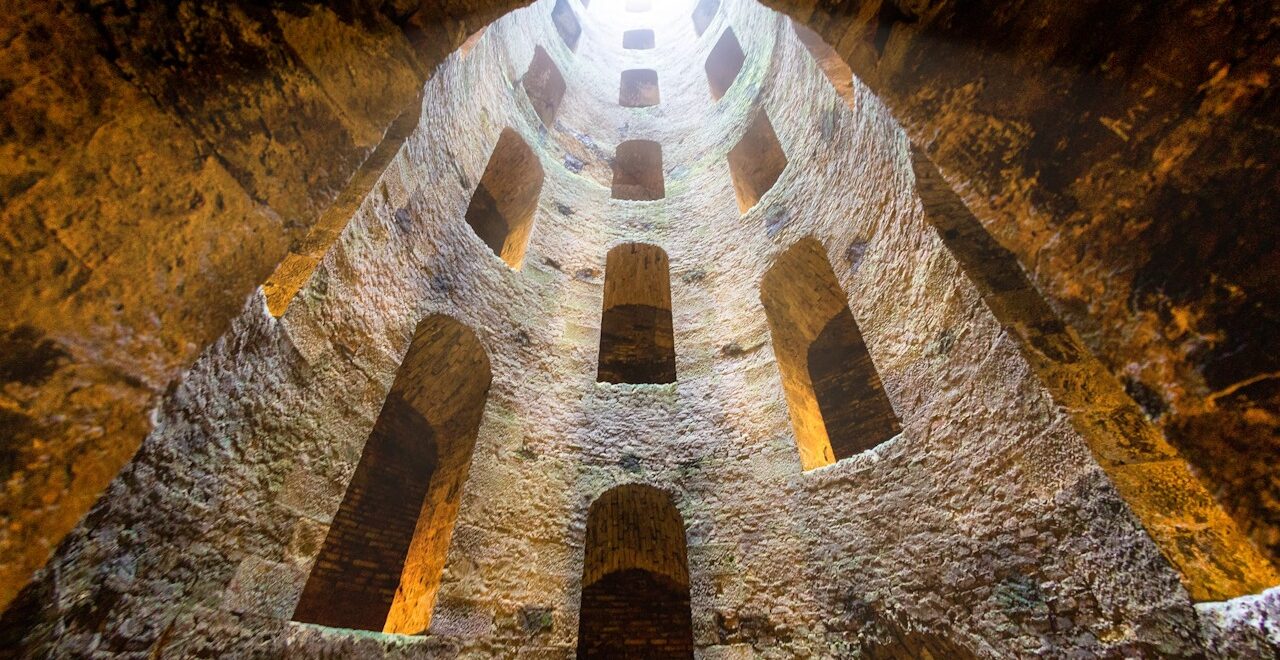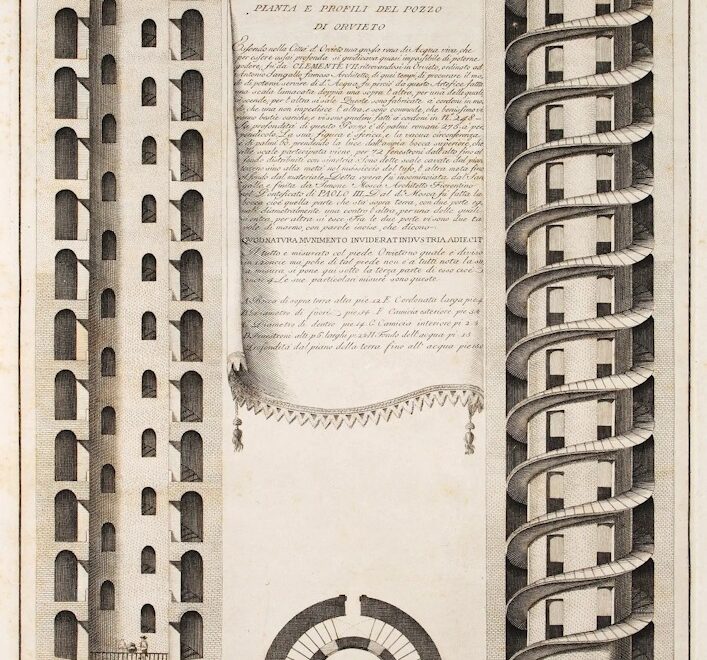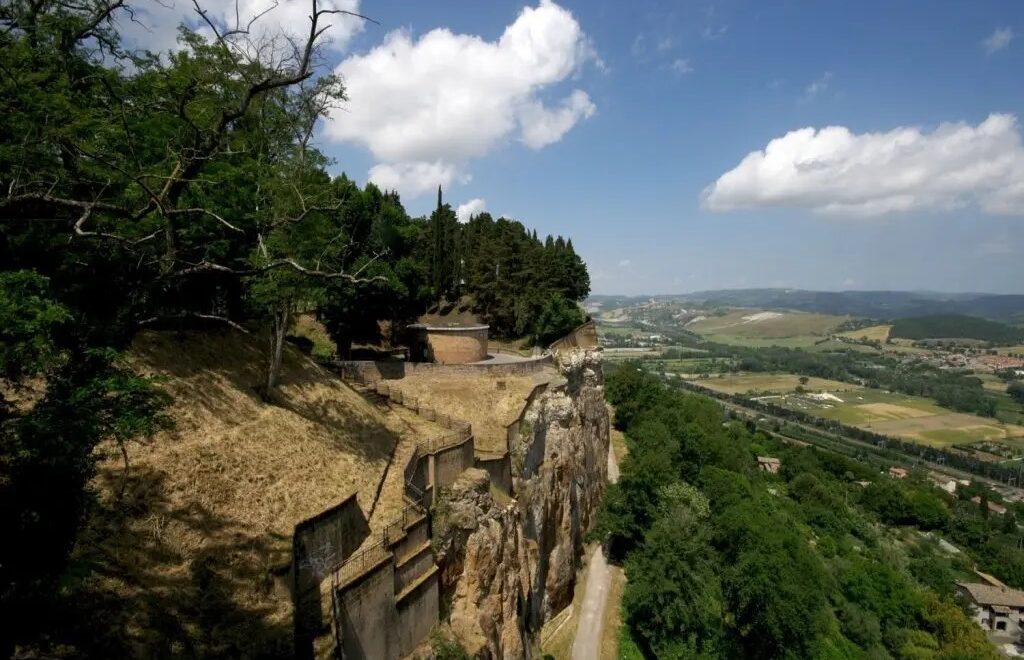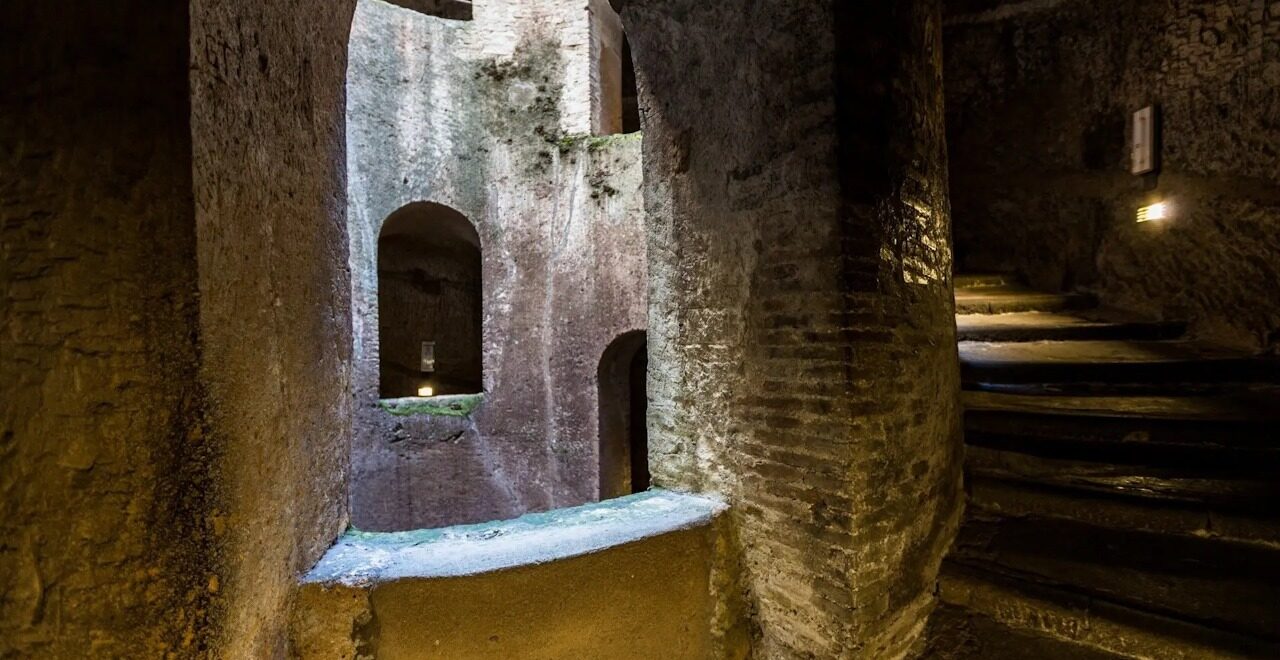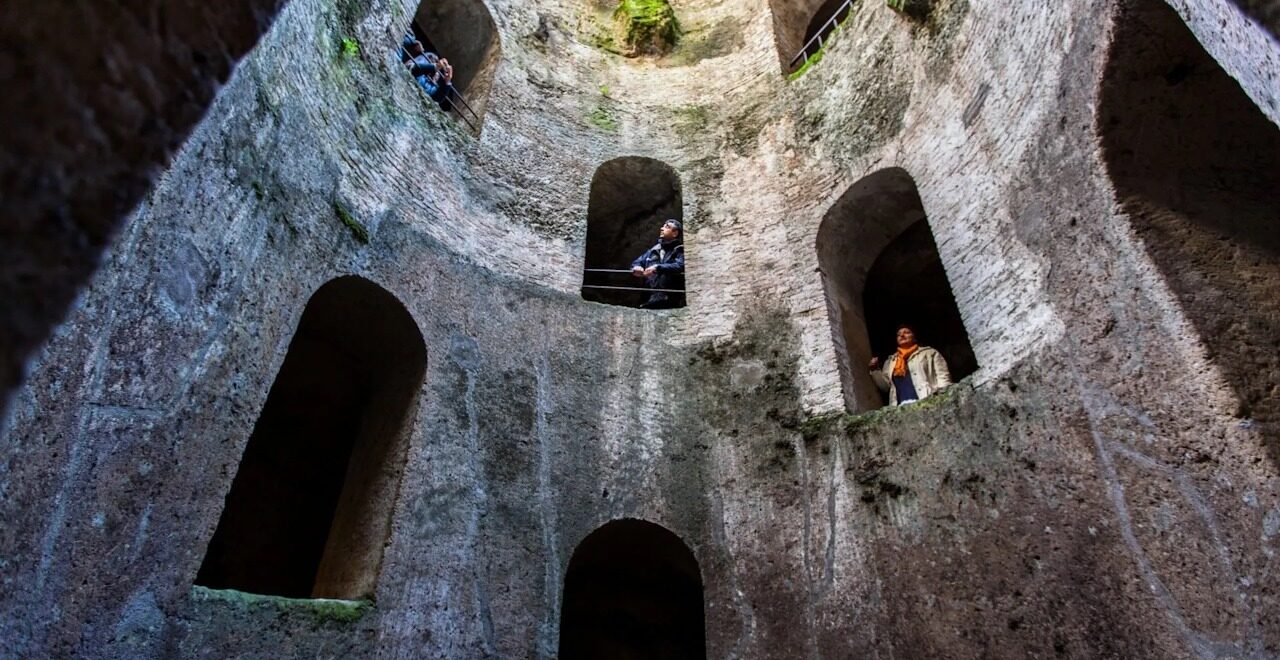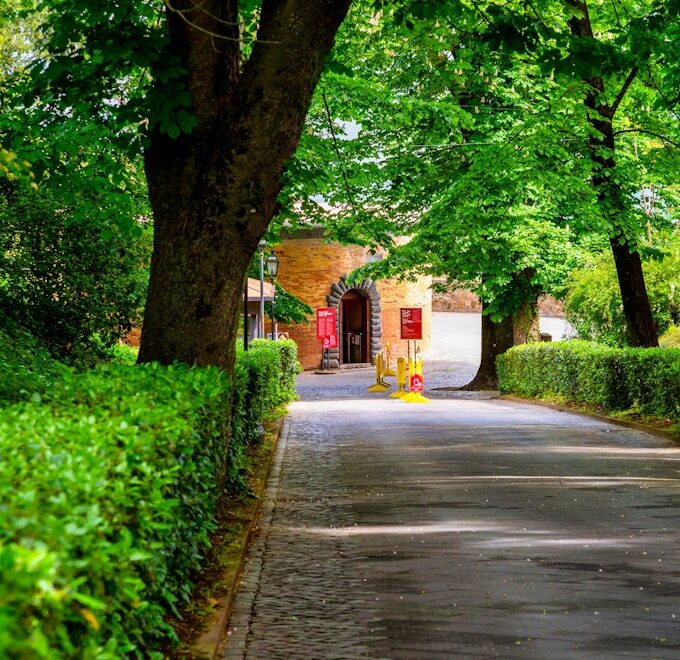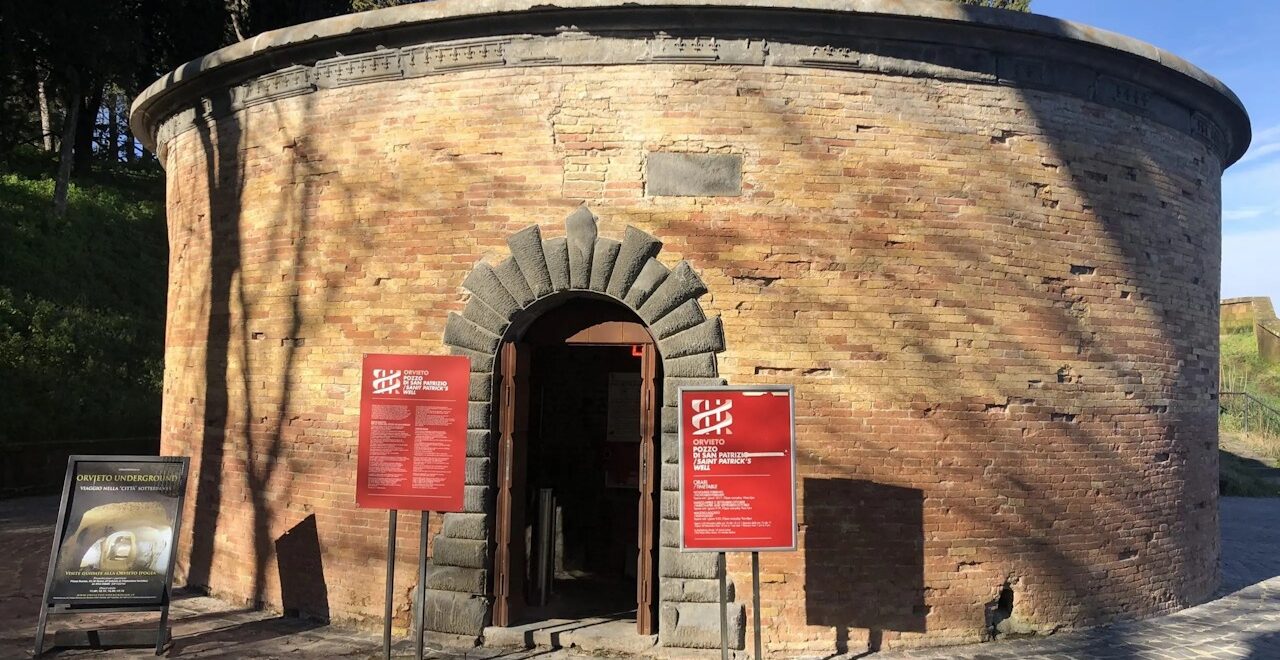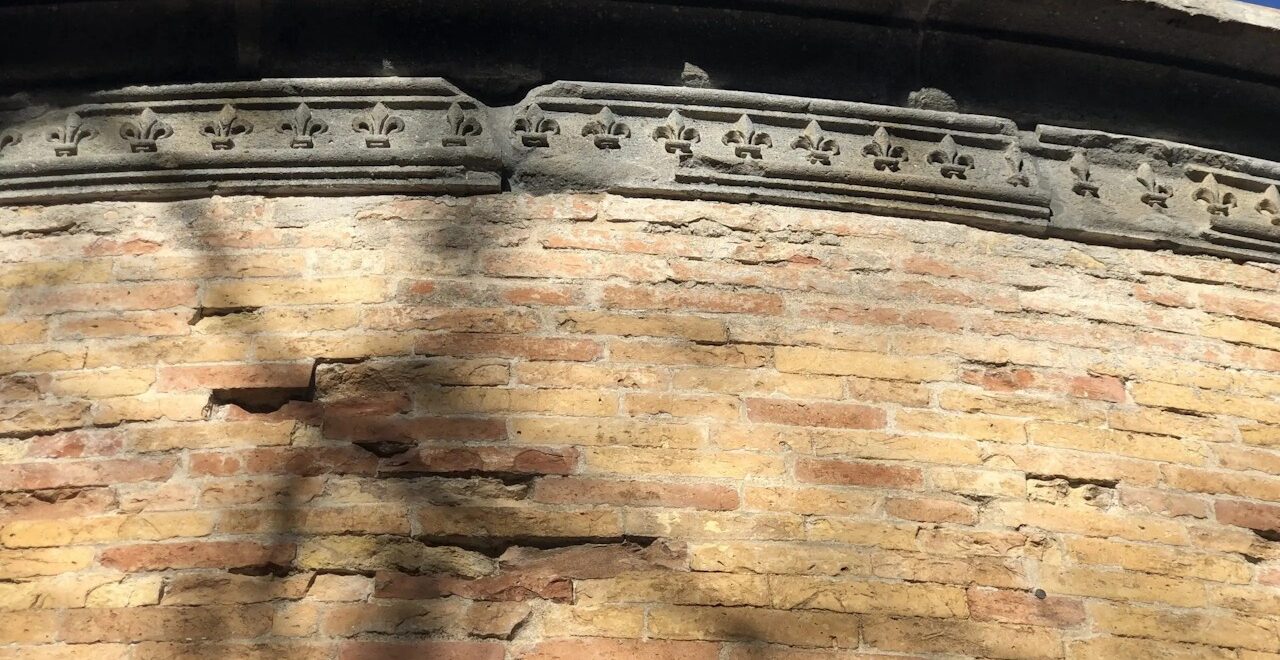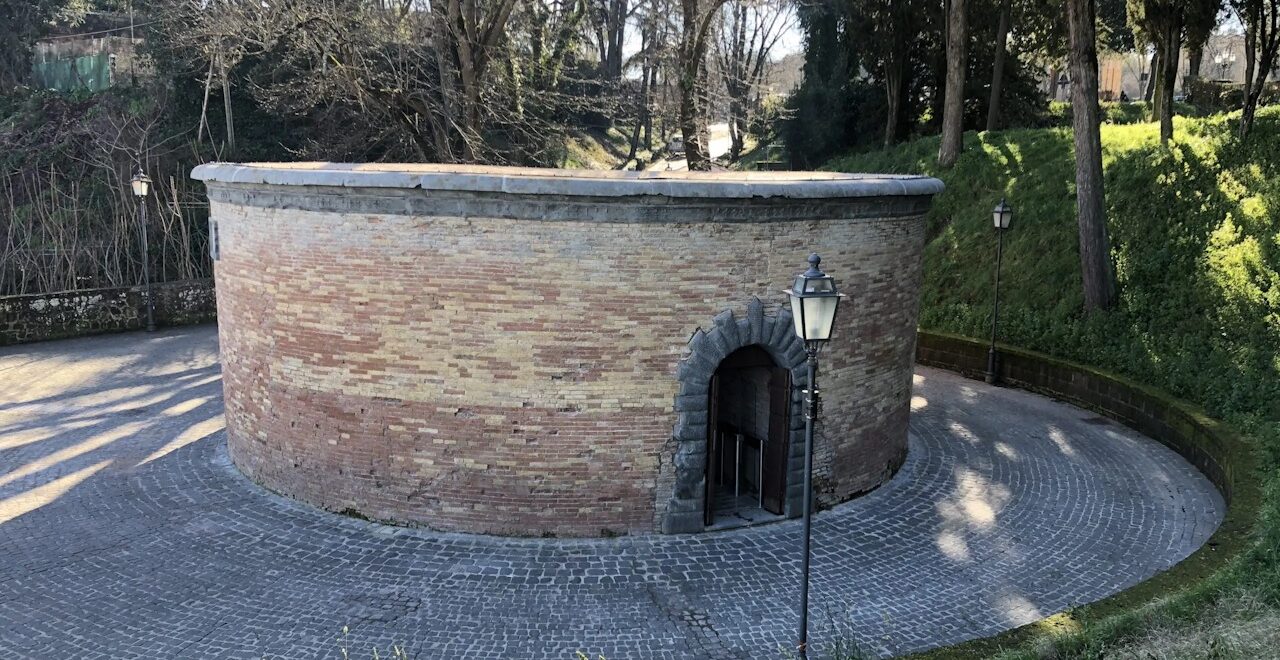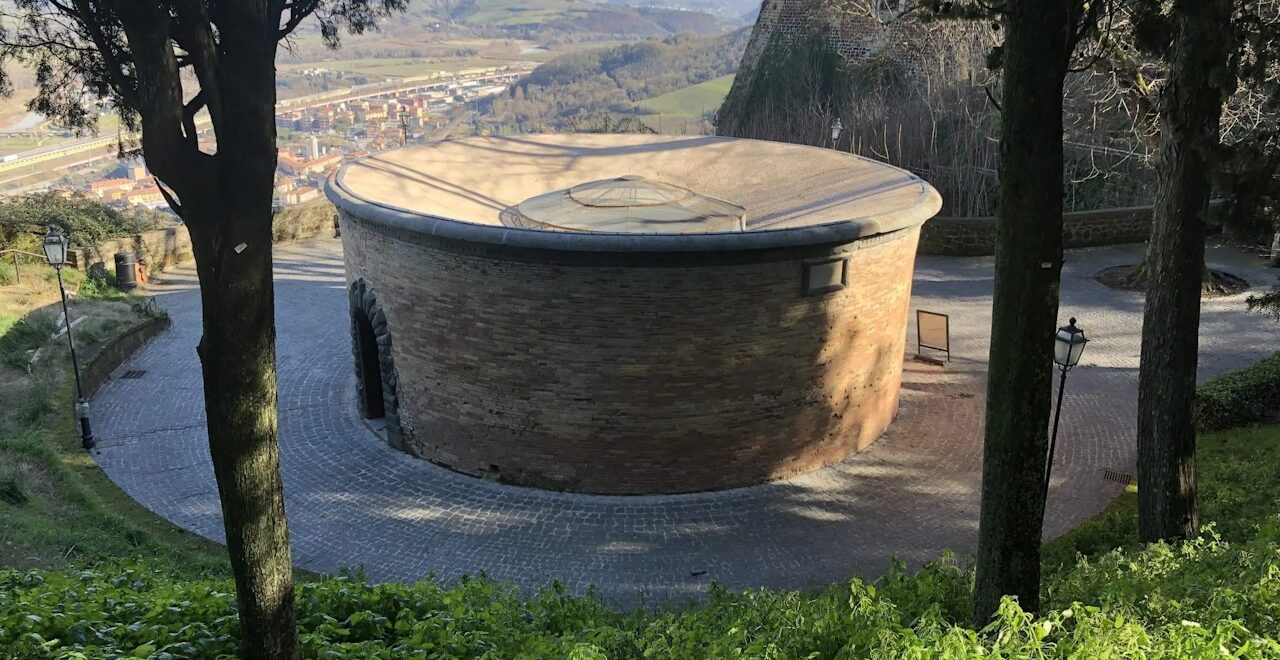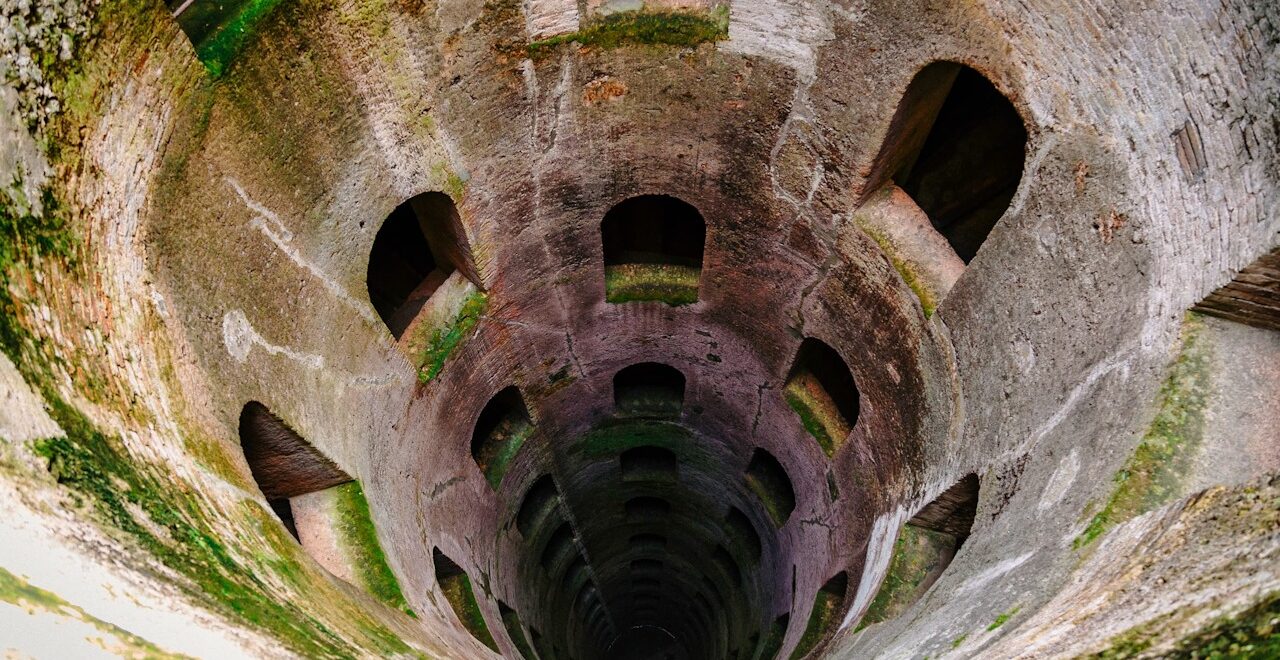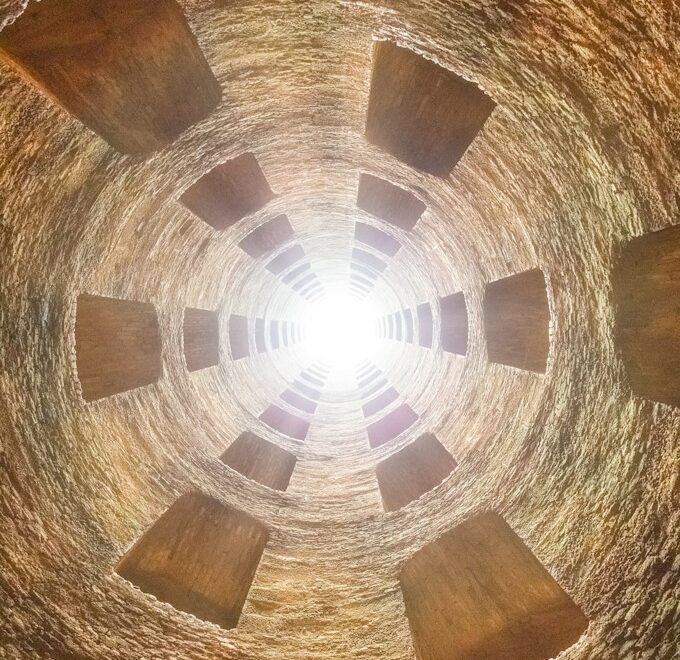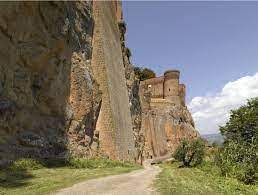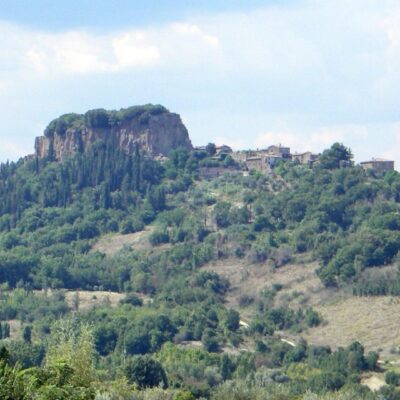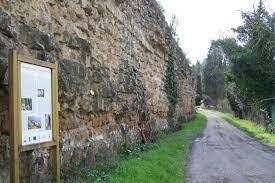The Well of San Patrizio and the underground water network, Orvieto, Italy
The Well of San Patrizio, a masterpiece of Renaissance engineering, was excavated by Pope Clement VII, who took refuge in Orvieto after “the Sack of Rome” by the imperial troops and the Lanzichenecchi, to supply the city with water in the event of a siege. The task was entrusted to Antonio da Sangallo the Younger in 1527. The work was completed in 1537 under the papacy of Paul III Farnese. The well initially called “della Rocca” as it is close to the Rocca Albornoz, was later renamed “Pozzo di San Patrizio” because due to its depth it was approached to the grotto of an Irish lake where the saint went to pray. Legend has it that this cavity was so deep that it was the gateway to Purgatory. The well has an important depth (54 meters) and is composed of a double spiral staircase structure of 248 steps, 13 meters in diameter and is illuminated by 72 large windows. This ingenious structure created by Sangallo allowed pack animals to go down and up to get water without ever meeting. Going down the well, near the bottom, you can see a curious door. From here, crossing a narrow tunnel dug into the tuff, you arrive near the Fountain of San Zero, under the cliff. The fountain is connected to the emissary which guarantees the constant level of water at the bottom of the well coming from a natural spring. It is said that in addition to its original function, this tunnel also had an important purpose: to represent a quick and safe escape route for the Pope in case of danger.
The presence of artificial cavities (about 1200 have been identified) in the subsoil of Orvieto is due to the geological nature of the tuff rock on which the city stands and within which excavation has continued for centuries.
The complex system of tunnels located in the subsoil characterizes the underground reality of Orvieto, in which ancient workplaces materialize, water drainage systems already designed for the Etruscan city are appreciated, medieval water supply systems are included with the first city aqueduct.
Visit the museum website: https://liveorvieto.com/


